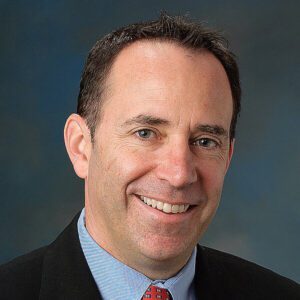In 2012, Amazon.com got aggressive about chasing economic development incentives, opening its first tax-break office. The company had avoided paying billions in sales taxes over many years because laws hadn’t yet caught up to the growing online marketplace. But now rules were catching up, so it turned to other types of tax avoidance.
Amazon got really good at it. As of this writing, Good Jobs First has documented over $6.3 billion in subsidies given to Amazon across the country.
Two economists wanted to learn whether that money (which was closer to $5 billion when they conducted the research; Amazon went on a pandemic-fueled subsidy spree, as the Financial Times reported) had created jobs and benefited local economies.
Their top finding: “Our analysis suggests that these subsidies have been largely ineffective at creating jobs.”
Ike Brannon with the Jack Kemp Foundation and Matthew Winden with the University of Wisconsin-Whitewater used our Subsidy Tracker to get information on how much and where Amazon has gotten incentives, as well as data on regional employment, wages, and economic activity to gauge the company’s impact on job creation.

I talked to Brannon, who is based in Washington, D.C., more about their findings. There are better ways to do economic development, Brannon explained. He answered my questions by email.
Q: As your report notes, the average warehouse worker makes $32,000, which is significantly less than what you found governments give to Amazon for each job – $44,300. But, to raise a point often cited by subsidy cheerleaders, isn’t that a job that wouldn’t have been created in the first place?
A: When the unemployment rate is 3.5%, there aren’t many people who can’t find a job: Amazon is mainly hiring people who are working somewhere else.
Subsidizing an employer in a place where the unemployment rate is high can make sense — although most governments don’t do this very well — but doing so in an era of record low employment simply doesn’t make sense for taxpayers. Our research indicates that there is no significant increase in net new jobs after Amazon builds a new facility.
Q: Your report draws attention to research that shows economic development subsidies are “inefficient ways to boost local economies.” Why is that?
A: There is a substantial body of research from economists who work in regional development showing that government tax subsidies intended to lure jobs to a community nearly always produce fewer jobs — and at a higher cost — than the promises typically made by the politicians offering them, and are generally inefficient ways to boost local economies.
I began my career as an academic economist in Wisconsin and I did research on the state’s many subsidy programs to create and retain “good jobs,” and the companies that received most of this money two decades ago are either diminished or non-existent, while the companies that are creating the prized high-paying jobs were tiny back then — but paying higher taxes to support these subsidies.
Q: Subsidy supporters often claim “spillover” or “trickle-down” effects from businesses – that is, Amazon’s presence will spur more businesses which in turn might create jobs. What did you find in relation to this?
A: The study examined 20 years worth of data on the employment impacts in 134 communities that offered subsidy packages to Amazon for new distribution centers and other facilities.
We found little evidence of a big spillover effect that leads to the creation of additional jobs beyond Amazon’s direct employees. Amazon’s not running a research facility with lots of ancillary spinoff employers or support services. It is a retailer — a very good and innovative one, but the job generation isn’t that big.
Q: If Amazon’s demands for a subsidy weren’t met, couldn’t it simply go to another place that might, leaving the initial community without anything?
A: Amazon’s top priority with these new distribution facilities is to deliver goods and services to communities with strong demand for their products. They are not going to build a distribution facility in a community in economic decline, no matter how high a subsidy they are offered. The best way to attract Amazon is to focus on building a strong local economy.
Q: If subsidies aren’t effective at boosting economies, what might be better ways?
A: Rather than target a specific company with tax breaks, it is invariably more effective for a government to foster a competitive business environment that keeps taxes low and ensures that regulations are not too burdensome.
Another effective strategy is for a community to make itself more attractive for people to live there. Communities that have done that tend to attract talented, entrepreneurial people who then create jobs.
The biggest employer of skilled workers in Madison, Wisconsin, for instance — Epic Systems — located in the city because its founder wanted to live there, and it’s easy to sell University of Wisconsin graduates — and lots of other talented people — on the idea of living in the bucolic community.
Here’s the full report, and an Op-Ed Brannon wrote for the Washington Business Journal.
MORE CONVERSATIONS:
5 Questions With Dave Wells: Tempe, Arizona Voters Reject NHL Arena Subsidy
5 Questions with Bridget Fisher: New York Penn Station’s TIF Problem
5 Questions with Jane Vancil: Auto-tracking subsidy outcomes
5 Questions With Ioana Marinescu: Low-Wage Earners Face Harsher Working Conditions
5 Questions with Tom Speaker: New York Breaks Up With Opportunity Zones
5 Questions with Joel Bakan: Ending Corporations’ Stranglehold on Society
5 Questions with Michelle Dillingham: Cincinnati’s TIF Crusader
5 questions with Patricia Todd: Alabama’s Transparency Problem
5 questions with David Wessel: Opportunity Zones, a Rich Man’s Game
5 Questions with Jonas Heese: When Newspapers Close, Corporate Misconduct Goes Up
5 Questions with Dorothy Brown: Federal loan forgiveness a good start
5 Questions with Sarah Austin: A Tax Avoidance Strategy Big Box Retailers Love
5 Questions with Joshua Jansa: Economic Development Subsidies Concentrate Wealth Upwards